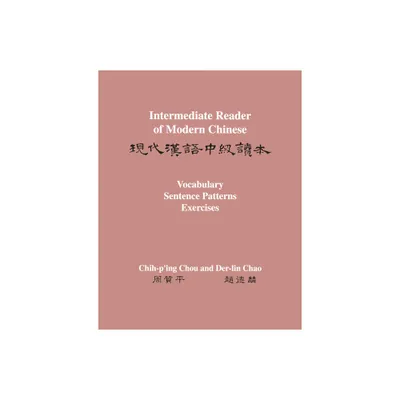Home
Modern Chinese Complex Sentences IV: General Review
Loading Inventory...
Barnes and Noble
Modern Chinese Complex Sentences IV: General Review
Current price: $180.00


Barnes and Noble
Modern Chinese Complex Sentences IV: General Review
Current price: $180.00
Loading Inventory...
Size: Hardcover
*Product Information may vary - to confirm product availability, pricing, and additional information please contact Barnes and Noble
This book is the final volume of a four-volume set on modern Chinese complex sentences, assessing the key attributes, related sentence structures, and semantic and pragmatic relevance of complex sentences.
Complex sentences in modern Chinese are unique in formation and meaning. Following on from analysis on coordinate, causal and adversative types of complex sentences, the ten chapters in this volume review the characteristics of complex sentences as a whole. The author discusses the constituents, related structures, semantic and pragmatic aspects of complex sentences, covering topics such as the constraints and counter-constraints between sentence forms and semantic relationships, six type-crossover markers, distinctions between simple sentences and complex sentences, clauses formed by a noun/nominal phrase followed by
le
, the
shǐ
-structure, subject ellipsis or tacit understanding of clauses, as well as double-subject sentences, alternative question groups and their relationships with complex sentences.
The book will be a useful reference for scholars and learners interested in Chinese grammar and language information processing.
Complex sentences in modern Chinese are unique in formation and meaning. Following on from analysis on coordinate, causal and adversative types of complex sentences, the ten chapters in this volume review the characteristics of complex sentences as a whole. The author discusses the constituents, related structures, semantic and pragmatic aspects of complex sentences, covering topics such as the constraints and counter-constraints between sentence forms and semantic relationships, six type-crossover markers, distinctions between simple sentences and complex sentences, clauses formed by a noun/nominal phrase followed by
le
, the
shǐ
-structure, subject ellipsis or tacit understanding of clauses, as well as double-subject sentences, alternative question groups and their relationships with complex sentences.
The book will be a useful reference for scholars and learners interested in Chinese grammar and language information processing.


















